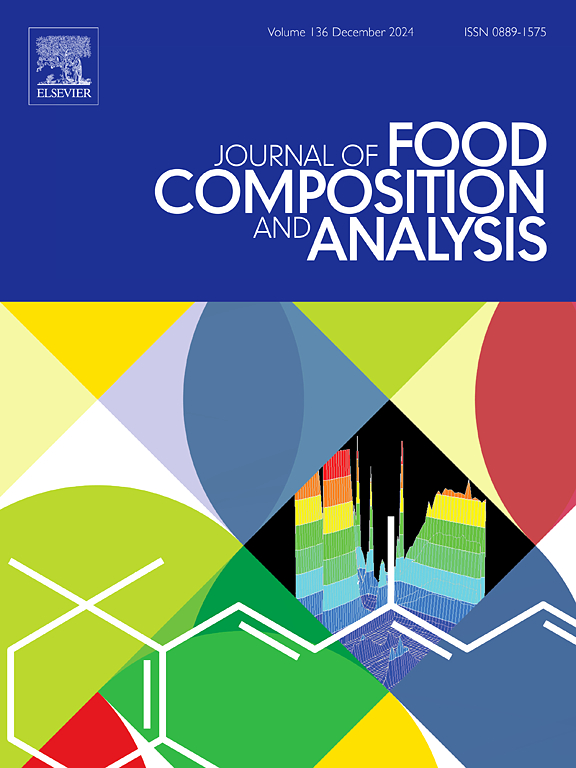Plantago L. species aqueous extracts: Chemical characterization and in vitro biological activity of plantains leaf teas
IF 4
2区 农林科学
Q2 CHEMISTRY, APPLIED
引用次数: 0
Abstract
Genus Plantago L. belongs to the group of traditionally used medicinal plants, recognized and accepted by modern medicine. The aim of this study was to analyze and valorise functional potential of water extracts (teas) prepared from six Plantago species: P. altissima L., P. argentea Chaix, P. holosteum Scop., P. lanceolata L., P. major L. and P. media L. Detailed chemical characterization of plantains teas was performed by spectrophotometry, HPLC-MS/MS and HPLC-DAD methods. Samples’ potential to inhibit α-amylase and tyrosinase, was evaluated by in vitro assays, while anti-inflammatory activity assessment was done by using U937 monocytes as in vitro model system, considering modulatory effect on production of metabolites of cyclooxygenase (COX) pathway of arachidonic acid metabolism: prostaglandin E2 (PGE2) and thromboxane A2 (TXA2). Dominant compounds in plantains teas were iridoids aucubin (97.4 mg per cup of a tea (tc) of P. media) and catalpol (53.2 mg/tc, P. altissima), and phenylethanoids acteoside (406 mg/tc, P. media) and plantamajoside (70.3 mg/tc, P. major). Most abundant flavonoids were luteolin and luteolin-7-O-glucoside, while chlorogenic and vanillic acid were dominant phenolic acids. P. media tea exhibited the highest α-amylase inhibition capacity, while P. holosteum, P. argentea, and P. altissima teas demonstrated the strongest inhibitory activity against tyrosinase. To the best of our knowledge, this is the first study investigating these bioactivities of the aforementioned plant species. Five Plantago teas reduced PGE2 production (from 15.8 % to 28.1 %), while four samples reduced TXA2 production (from 16 % to 28.2 %). P. altissima tea reduced COX-2 mRNA expression by 9.1 folds. In general, Plantago teas demonstrated remarkable in vitro biological activity, with P. media standing out for its broad range of potential curative properties based on the applied in vitro assays. Furthermore, this is one of the first studies to reveal the comprehensive chemical composition of Plantago teas. The findings provide significant insights into the bioactivity of poorly investigated species, highlighting the need for further research on these plants, which may have applications in the food, cosmetic, and pharmaceutical industries.
求助全文
约1分钟内获得全文
求助全文
来源期刊

Journal of Food Composition and Analysis
工程技术-食品科技
CiteScore
6.20
自引率
11.60%
发文量
601
审稿时长
53 days
期刊介绍:
The Journal of Food Composition and Analysis publishes manuscripts on scientific aspects of data on the chemical composition of human foods, with particular emphasis on actual data on composition of foods; analytical methods; studies on the manipulation, storage, distribution and use of food composition data; and studies on the statistics, use and distribution of such data and data systems. The Journal''s basis is nutrient composition, with increasing emphasis on bioactive non-nutrient and anti-nutrient components. Papers must provide sufficient description of the food samples, analytical methods, quality control procedures and statistical treatments of the data to permit the end users of the food composition data to evaluate the appropriateness of such data in their projects.
The Journal does not publish papers on: microbiological compounds; sensory quality; aromatics/volatiles in food and wine; essential oils; organoleptic characteristics of food; physical properties; or clinical papers and pharmacology-related papers.
 求助内容:
求助内容: 应助结果提醒方式:
应助结果提醒方式:


